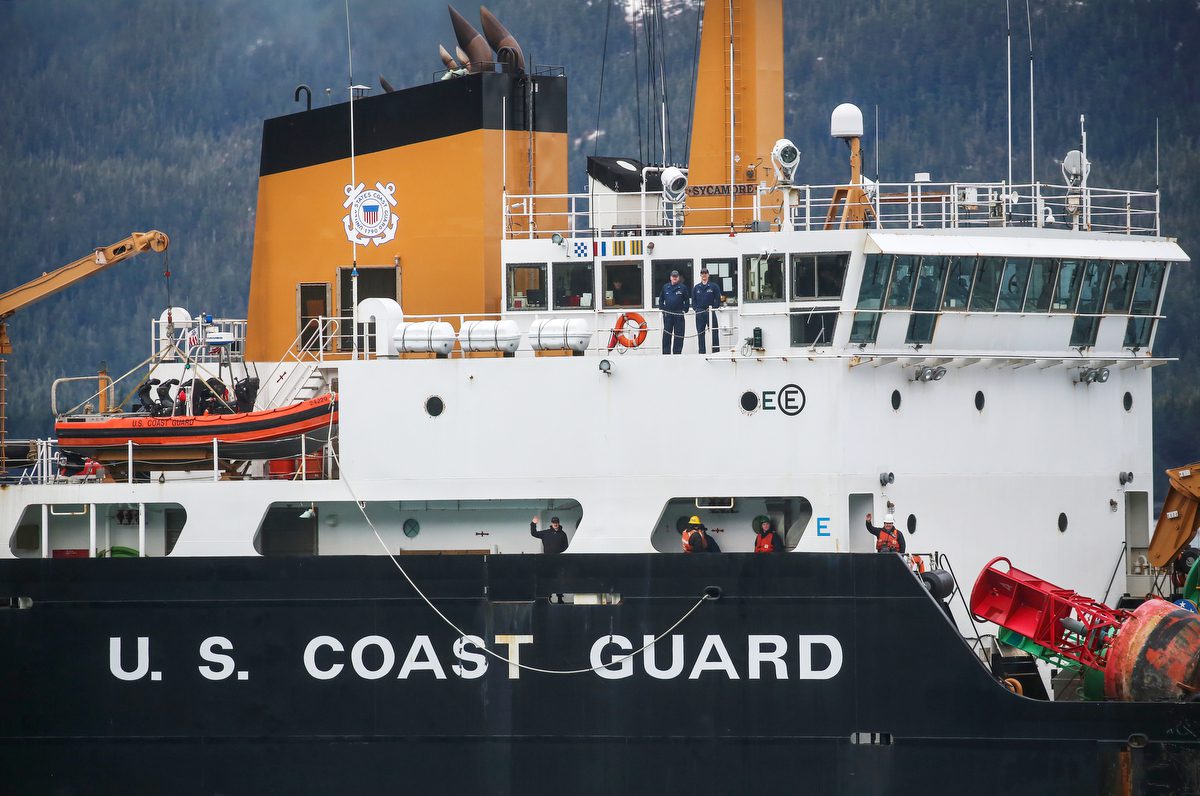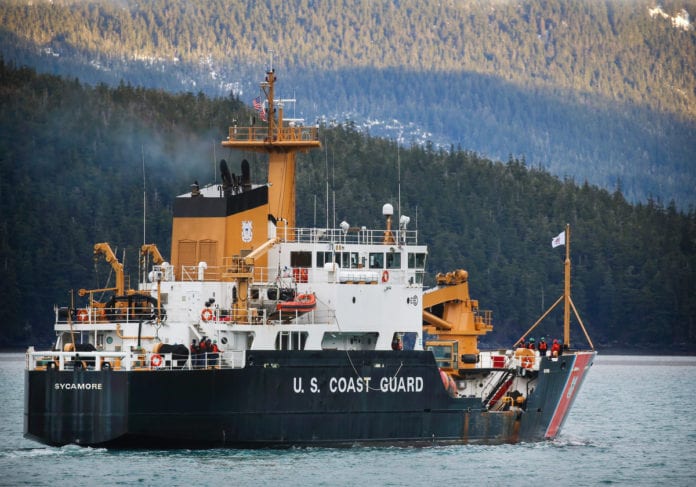
For the past several months, the berth on the Coast Guard dock off the North Fill has been vacant. That’s because the USCG Cutter Sycamore left on Feb. 9 for a 44-day voyage that included stops in California and Mexico followed by passage through the Panama Canal enroute to the Coast Guard Yard in Curtis Bay, Maryland.
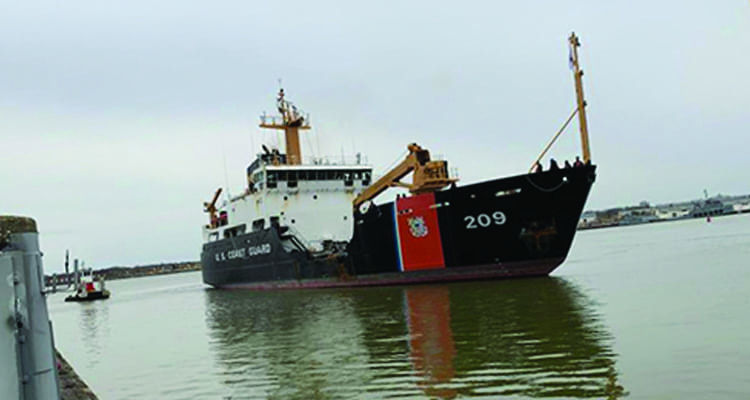
It arrived there March 25 to undergo midlife maintenance and updates designed to increase its operational availability and mission capability over the remainder of its 30-year ship life.
A 225-foot seagoing buoy tender, the Sycamore was built by Marionette Marine Corporation in Wisconsin and launched in 2001. She was commissioned in Cordova on July 2, 2002, replacing the aging Sweetbrier.
The Sycamore’s trip to the yard makes her the seventh of 16 Juniper class ships to undergo such maintenance. Upon completion, she will be relocated to Duluth, Michigan.
In addition to tending aids-to-navigation buoys, the Sycamore has been responsible for maintenance of National Data Center offshore buoys, marine environmental protection, maritime law enforcement, icebreaking, and search and rescue.
After 17 years of service in rugged Alaskan waters, she was ready for the complete work-over, and will be replaced by another identical Juniper-class buoy tender, the USCG Cutter Fir, which had been stationed in Astoria, Oregon.

The Cordova based crew that manned the Sycamore on its 8,200-mile journey, at a speed of 12 to 13 knots, will shift over to the Fir, which is now in final stages of completing its overhaul in the Maryland yard.
While between ships, the Sycamore crew has spent time here training and working in the Coast Guard dock storage area on materials and equipment that will be put back to use once the Fir arrives.
Current plans have the crew returning to Maryland in the middle of June to man the Fir, with arrival back in Cordova in late September. The USCG is one of the oldest organizations of the federal government. It was established in 1790, when President George Washington signed the
Tariff Act that authorized the construction of 10 “cutters” to enforce federal tariff and trade laws and prevent smuggling.
Not surprisingly, the Coast Guard is rich in tradition, and many of the ships in its fleet are named in honor of prior vessels of significant fame.
For example, the Fir that is coming to Cordova is named after the last lighthouse tender built specifically for the U.S. Lighthouse Service to resupply lighthouses and lightships, as well as service buoys. The first Fir was commissioned in 1940 and home-ported in Seattle from 1940 to 1991.
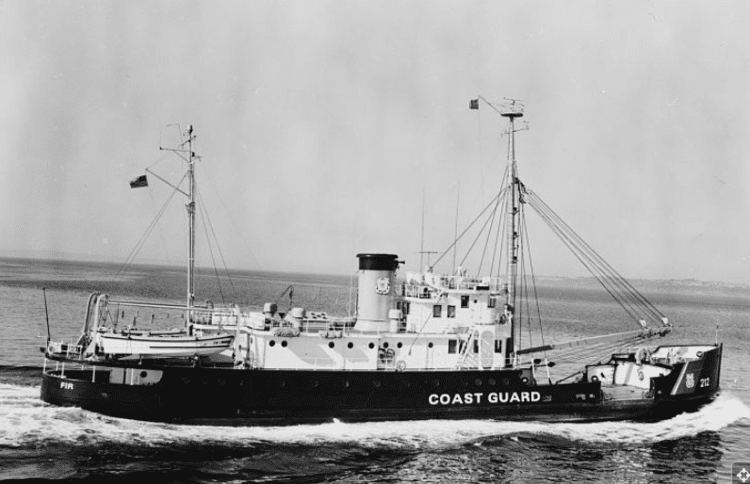
As the Coast Guard’s longest serving vessel, she was designated “Queen of the Fleet” in 1988, and her bow was painted with gold hull numbers. One of her more unusual assignments was patrolling the Lake Washington Gold Cup Hydro Race Regatta in Seattle in 1958.
The new Fir, commissioned in 2003, was stationed in Astoria for 15 years, and had to routinely cross nearby infamous waters at the mouth of the Columbia River to perform its many duties. It was nicknamed “The Bar Tender,” and its motto is “No Bar Too Rough, Too Tough, Too Far.”
Not surprisingly, the first of the new 225-foot USCG tenders, which was launched in 1995, was actually the third Coast Guard Juniper to sail the seas, replacing Juniper No. 1 that was built for the Coast Guard back in 1903, and Juniper No. 2, which was launched in 1939.
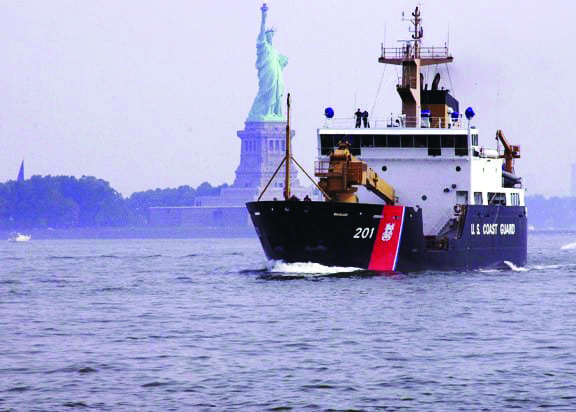
The Juniper-class ships are replacements for older 180-foot buoy tenders, such as the Sedge and Sweetbrier, which were stationed in Cordova for many years. They incorporate many technological advances such as electronic charting and position keeping, remote engineering monitoring and control to maintain buoys, as well as the ability to skim and recover oil.
Others in the new class, which are all named after trees, include not only the Juniper, Sycamore and Fir, but also the Willow, Kukiu (Hawaii’s state tree), Elm, Walnut, Spar, Maple, Aspen, Cypress, Oak, Hickory, Hollyhock, Sequoia and Alder.
Ironically, while Cordova does abound with willow and alder, neither sycamore or fir, namesakes of the two Juniper-class tenders stationed here, are native to the area.
These are just a few of the Coast Guard ship names. As of 2017, the 56,000 members of the USCG operated a multi-mission, interoperable fleet of 243 cutters, 201 fixed and rotary-wing aircraft and over 1,600 boats.
One has to admire and appreciate not only the traditions found in the USCG naming of their vessels; but even more importantly, the marvelous services crew members perform, and all they and their families contribute to not only to our community, but to all of those who sail upon the seas.
